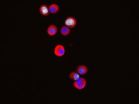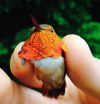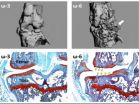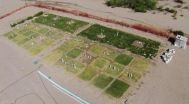(Press-News.org) A team including researchers from the U.S. Geological Survey (USGS) and the San Diego Zoo Institute for Conservation Research has developed a novel methodology that, for the first time, combines 3-D and advanced range estimator technologies to provide highly detailed data on the range and movements of terrestrial, aquatic, and avian wildlife species. One aspect of the study focused on learning more about the range and movements of the California condor using miniaturized GPS biotelemetry units attached to every condor released into the wild.
"We have been calculating home ranges for the tracked condors in three dimensions for the first time using this GPS location data, and our novel density estimator was used to incorporate the vertical component of animal movements into projections of space-use," said James Sheppard, Ph.D., a postdoctoral associate at the Institute for Conservation Research.
While its population now stands at approximately 400 birds, up from only 22 in the mid-1980s, conservation efforts to reintroduce the California condor to its former habitat in the mountains of California and Mexico have been hampered by a lack of understanding about condor movement patterns and habitat use.
"This data will be used as a predictive management tool to inform conservation efforts to restore condor populations, particularly with regard to emerging threats such as climate change and wind energy impacts," added Sheppard
The team created highly detailed data sets and visualizations relying on expertise from researchers at the San Diego Supercomputer Center (SDSC) at the University of California, San Diego, after they tracked three highly iconic but threatened species: California condors, giant pandas, and dugongs, a large, marine animal somewhat similar to the manatee.
"We were able to speed up their software by several orders of magnitude," said Robert Sinkovits, SDSC's director of the Scientific Applications Group, which helps researchers make optimal use of SDSC's larger supercomputers. "In this case, calculations that had formerly taken four days to complete were finished in less than half an hour."
INFORMATION:
A paper detailing the project, called "Movement-based Estimation and Visualization of Space Use in 3-D for Wildlife Ecology and Conservation," was published July 1 in the PLoS-ONE online science journal. A video of the project can be viewed on SeedMe at https://www.seedme.org/condor_vis.
In addition to Tracy and Sheppard, researchers for the study included Jun Zhu (University of Wisconsin, Madison); Fuwen Wei (Chinese Academy of Science, Beijing); Ronald Swaisgood (San Diego Zoo Institute for Conservation Research); and Robert Fisher (USGS, San Diego).
The California condor tracking part of the study was funded or supported by San Diego Zoo Global, the U.S. Fish and Wildlife Service, Sempra Energy and Mexico-based organizations including Instituto Nacional de Ecologia, Comision Nacional Para El Conocimiento y Uso de la Biodiversidad, Secretaria de Medio Ambiente y Recursos Naturales, Wildcoast/Costasalvaje. The giant panda research was funded by the National Natural Science Foundation of China, Wildlife Experimental Platform of Chinese Academy of Sciences, and San Diego Zoo Global. Funding and support for the dugong research was provided by CRC Reef, Australian Research Council LIEF Scheme, and James Cook University.
As an Organized Research Unit of UC San Diego, SDSC is considered a leader in data-intensive computing and cyberinfrastructure, providing resources, services, and expertise to the national research community, including industry and academia. Cyberinfrastructure refers to an accessible, integrated network of computer-based resources and expertise, focused on accelerating scientific inquiry and discovery. SDSC supports hundreds of multidisciplinary programs spanning a wide variety of domains, from earth sciences and biology to astrophysics, bioinformatics, and health IT. With its two newest supercomputers, Trestles and Gordon, and a new system called Comet to be deployed in early 2015, SDSC is a partner in XSEDE (Extreme Science and Engineering Discovery Environment), the most advanced collection of integrated digital resources and services in the world.
The San Diego Zoo Global Wildlife Conservancy is dedicated to bringing endangered species back from the brink of extinction. The Conservancy makes possible the wildlife conservation efforts(representing both plants and animals) of the San Diego Zoo, San Diego Zoo Safari Park, San Diego Zoo Institute for Conservation Research, and international field programs in more than 35 countries. The important conservation and science work of these entities is supported in part by The Foundation of the Zoological Society of San Diego.
3-D technology used to help California condors and other endangered species
2014-07-11
ELSE PRESS RELEASES FROM THIS DATE:
USC stem cell researcher targets the 'seeds' of breast cancer metastasis
2014-07-11
For breast cancer patients, the era of personalized medicine may be just around the corner, thanks to recent advances by USC Stem Cell researcher Min Yu and scientists at Massachusetts General Hospital and Harvard Medical School.
In a July 11 study in Science, Yu and her colleagues report how they isolated breast cancer cells circulating through the blood streams of six patients. Some of these deadly cancer cells are the "seeds" of metastasis, which travel to and establish secondary tumors in vital organs such as the bone, lungs, liver and brain.
Yu and her colleagues ...
Precipitation, not warming temperatures, may be key in bird adaptation to climate change
2014-07-11
CORVALLIS, Ore. – A new model analyzing how birds in western North America will respond to climate change suggests that for most species, regional warming is not as likely to influence population trends as will precipitation changes.
Several past studies have found that temperature increases can push some animal species – including birds – into higher latitudes or higher elevations. Few studies, however, have tackled the role that changes in precipitation may cause, according to Matthew Betts, an Oregon State University ecologist and a principal investigator on the study.
"When ...
Do women perceive other women in red as more sexually receptive?
2014-07-11
Previous research has shown that men perceive the color red on a woman to be a signal of sexual receptivity. Women are more likely to wear a red shirt when they are expecting to meet an attractive man, relative to an unattractive man or a woman. But do women view other women in red as being more sexually receptive? And would that result in a woman guarding her mate against a woman in red? A study published in Personality and Social Psychology Bulletin sought to answer these questions.
Perceptions of Sexual Receptivity
Nonverbal communication via body language, facial ...
ACL reconstructions may last longer with autografts
2014-07-11
SEATTLE, WA – Anterior Cruciate Ligament (ACL) reconstructions occur more than 200,000 times a year, but the type of material used to create a new ligament may determine how long you stay in the game, say researchers presenting their work today at the Annual Meeting of the American Orthopaedic Society of Sports Medicine (AOSSM).
"Our study results highlight that in a young athletic population, allografts (tissue harvested from a donor) fail more frequently than using autografts (tissue harvested from the patient)," said Craig R. Bottoni, MD, lead author from Tripler ...
New study may identify risk factors for ACL re-injury
2014-07-11
SEATTLE, WA – Re-tearing a repaired knee Anterior Cruciate Ligament (ACL) happens all too frequently, however a recent study being presented today at the American Orthopaedic Society for Sports Medicine's (AOSSM) Annual Meeting suggests that identification and patient education regarding modifiable risk factors may minimize the chance of a future ACL tear.
"Our research suggests that a few risk factors such as, age, activity level and type of graft utilized may point to the possibility of re-injury," said lead author, Christopher C. Kaeding, MD of the Ohio State University. ...
Potent spider toxin 'electrocutes' German, not American, cockroaches
2014-07-11
Using spider toxins to study the proteins that let nerve cells send out electrical signals, Johns Hopkins researchers say they have stumbled upon a biological tactic that may offer a new way to protect crops from insect plagues in a safe and environmentally responsible way.
Their finding—that naturally occurring insect toxins can be lethal for one species and harmless for a closely related one—suggests that insecticides can be designed to target specific pests without harming beneficial species like bees. A summary of the research, led by Frank Bosmans, Ph.D., an assistant ...
Blame it on the astrocytes
2014-07-11
Rio de Janeiro, Brazil- In the brains of all vertebrates, information is transmitted through synapses, a mechanism that allows an electric or chemical signal to be passed from one brain cell to another. Chemical synapses, which are the most abundant type of synapse, can be either excitatory or inhibitory. Synapse formation is crucial for learning, memory, perception and cognition, and the balance between excitatory and inhibitory synapses critical for brain function. For instance, every time we learn something, the new information is transformed into memory through synaptic ...
Omega 3 fatty acids lessen severity of osteoarthritis in mice
2014-07-11
Mice consuming a supplement of omega 3 fatty acids had healthier joints than those fed diets high in saturated fats and omega 6 fatty acids, according to Duke Medicine researchers.
The findings, published in the Annals of the Rheumatic Diseases (10.1136/annrheumdis-2014-205601) on July 11, 2014, suggest that unhealthy dietary fats – not just obesity – may contribute to worsening osteoarthritis.
"Our results suggest that dietary factors play a more significant role than mechanical factors in the link between obesity and osteoarthritis," said Farshid Guilak, Ph.D., Laszlo ...
'Tailored' water -- the latest in lawn care
2014-07-11
In Santa Fe, Albuquerque, and other major cities in New Mexico, nearly every public golf course is now watered with treated municipal wastewater rather than precious potable water supplies. Across the U.S. Southwest as a whole, more than 40% of all golf courses receive treated effluent. Reusing the effluent increases the sustainability of golf courses.
Additionally, golf courses and homeowners alike fertilize their lawns during the growing season. The major nutrient in fertilizer is nitrate. A New Mexico State University turfgrass expert has a new vision for even more ...
Non-invasive test could be used to predict premature birth and delivery of small babies
2014-07-11
Testing for the presence of specific molecules present in the urine of pregnant women can give an indication in early pregnancy of whether a baby will be born premature or the fetus will suffer poor growth, according to research published in the open access journal BMC Medicine. Identifying these conditions early in pregnancy could potentially help reduce complications and manage any difficulties, although more work is needed before the findings can be translated to clinical settings.
Researchers from Imperial College London and the University of Crete analyzed the metabolites ...




